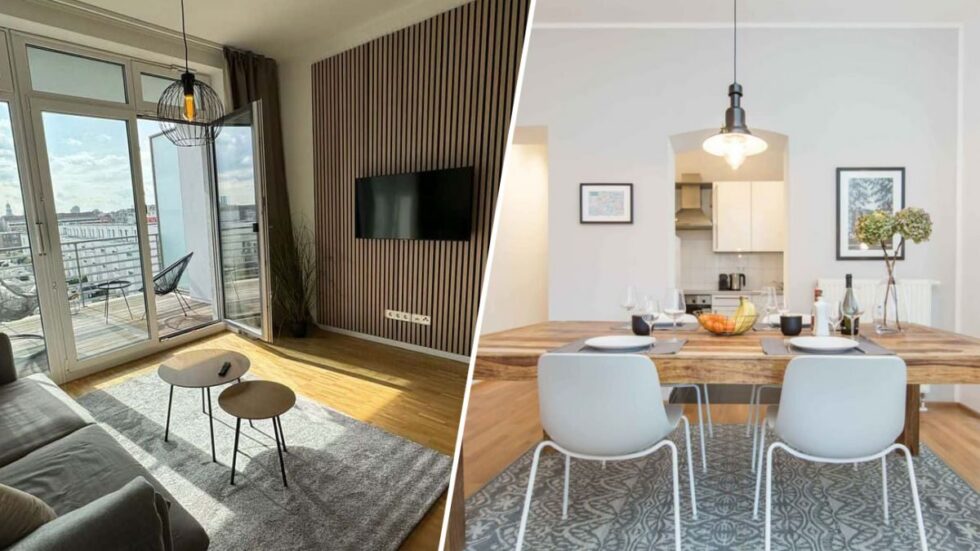What is happening to Bavaria: Where buying an apartment by 2035 could be a smart move

Real estate in Bavaria has long been considered the pinnacle of the German housing market, with Munich often leading as the country’s most expensive city. Yet, recent demographic trends, climate challenges, and economic shifts suggest that Bavaria may no longer dominate the real estate landscape by 2035. Investors and families are increasingly asking: which regions could offer both value and stability for long-term property purchases? Housing experts point to a combination of urban development, infrastructure expansion, and affordability as key decision drivers. Rising interest rates, stricter building regulations, and the EU’s climate neutrality goals are reshaping investment strategies across Germany. With migration patterns changing and technology hubs emerging in new regions, alternative cities are gaining attention. As noted by G.business, buyers are now carefully evaluating growth potential outside Bavaria, searching for the next “hidden champions” of the real estate market.
Shifting real estate dynamics across germany
The German real estate market is undergoing significant transformation. While Bavaria remains attractive for its cultural prestige and strong economy, affordability has reached limits for many households. Munich’s average apartment price exceeded €9,000 per square meter in 2024, pricing out much of the middle class. By contrast, cities in eastern Germany and secondary hubs in the west are positioning themselves as more affordable yet promising alternatives. Infrastructure investments, particularly in high-speed rail, are reducing travel times to major business centers, allowing people to live further away from traditional urban cores. Moreover, government incentives for energy-efficient housing construction make smaller cities more appealing for sustainable living. Analysts predict that by 2035, value appreciation will be stronger in regions that combine digital economy growth with livable housing costs.
Key factors reshaping the market include:
- High cost saturation in Bavaria and parts of Baden-Württemberg.
- Stronger job growth in secondary hubs like Leipzig, Dresden, and Dortmund.
- EU energy efficiency directives pushing for costly renovations in older housing stock.
- Improved public transport connections linking mid-sized cities to major hubs.
- Younger buyers prioritizing affordability and lifestyle over prestige.
Where affordability meets growth potential
Affordability is not just about the price per square meter, but about the balance between earnings and housing expenses. Cities like Leipzig and Magdeburg are emerging as attractive options, with average prices still below €3,000 per square meter. Their universities, growing tech industries, and cultural appeal provide long-term demand for rentals and ownership alike. In western Germany, Dortmund and Essen are experiencing a renaissance, driven by investments in green technology and logistics. Stuttgart’s satellite towns, while still within Baden-Württemberg, are offering more reasonable entry points compared to the overheated Munich market. Looking ahead to 2035, the mix of affordability, job market development, and livability will be decisive.
Cities worth watching for 2035:
- Leipzig – strong cultural scene and tech industry growth.
- Magdeburg – infrastructure boom linked to Intel’s €17 billion chip factory.
- Dortmund – logistics hub with affordable housing stock.
- Essen – transformation from coal industry to green economy.
- Kassel – location benefits due to central German transport links.
Climate change and its impact on property investment
Climate resilience is becoming a new factor in real estate strategy. Floods, heatwaves, and energy consumption requirements are influencing both property prices and buyer decisions. Bavaria, with its alpine beauty, faces increased risks of flooding in certain valleys, while droughts impact agricultural land values. Coastal regions in northern Germany are preparing for rising sea levels, yet cities like Bremen and Hamburg are investing in protective infrastructure. For investors looking at 2035, cities that combine resilience planning with sustainable housing policies will likely outperform. Federal subsidies for energy-efficient renovations also create opportunities in older building stock, particularly in East German cities where housing is still affordable.
Climate-related investment considerations:
- Risk of floods in Alpine valleys and along major rivers.
- EU directives requiring carbon-neutral housing by 2050.
- Government subsidies covering up to 30% of renovation costs.
- Increasing demand for passive houses and solar-ready apartments.
- Infrastructure investments in flood protection and green transport.
Infrastructure and connectivity as value drivers
Connectivity is key in predicting where apartment values will rise. By 2030, Germany plans to expand high-speed rail, linking more regional cities to hubs like Frankfurt, Berlin, and Hamburg. Cities within one-hour commuting distance of major hubs are expected to benefit most. For example, Halle is emerging as a cheaper alternative to Leipzig while still gaining from the same tech cluster. In the west, Wuppertal and Bochum profit from their proximity to Düsseldorf and Cologne. Long-term investment value will also depend on digital connectivity: access to 5G and fiber-optic networks is already shaping real estate demand. Investors focusing on regions with planned rail stations and industrial parks may see higher returns by 2035.
Infrastructure hotspots to monitor:
- Halle – tech spillover from Leipzig.
- Wuppertal – affordable housing with good rail links.
- Bochum – growing student and business population.
- Ulm – fast rail to Stuttgart and Munich.
- Rostock – port expansion linked to renewable energy.
Comparison of average apartment prices in 2024
| City | Avg. Price €/m² (2024) | Growth Potential by 2035 | Key Factors Driving Demand |
|---|---|---|---|
| Munich | €9,000+ | Low | Overheated market, prestige only |
| Stuttgart | €7,000 | Medium | Automotive hub, limited space |
| Leipzig | €2,800 | High | Tech sector growth, young population |
| Magdeburg | €2,600 | Very High | Intel chip factory, infrastructure expansion |
| Dortmund | €3,200 | High | Logistics hub, affordable housing |
| Essen | €3,500 | High | Green economy transformation |
| Rostock | €3,000 | Medium | Port city, renewable energy investments |
Strategies for buyers considering 2035
For buyers planning ahead, timing and strategy matter. First, identifying undervalued markets with strong job growth potential is key. Second, considering properties that can be renovated to meet EU climate regulations ensures long-term value protection. Third, diversification across regions may balance risks tied to local economies or climate change. Buyers should also consider demographic trends: cities with large student populations or international tech companies will see steady demand for rentals. Financing flexibility is essential, as interest rates may fluctuate in the coming decade. By 2035, buyers who focused early on sustainable housing in affordable, growing cities are expected to see the strongest returns.
Strategic tips for 2035 investors:
- Focus on affordable cities with strong economic growth.
- Consider renovation-friendly buildings with subsidy potential.
- Monitor high-speed rail expansion maps.
- Diversify between east and west German regions.
- Prioritize climate-resilient locations.
Demographic shifts shaping housing demand
Demographics play a crucial role in the real estate outlook toward 2035. Germany’s population is aging, but certain cities are attracting younger workers, students, and international professionals. Leipzig, Dresden, and Berlin continue to see inflows of young people due to universities and startup culture. At the same time, cities like Kassel and Erfurt benefit from affordable living for families with children. By contrast, Munich and Stuttgart are losing some younger households because of rising costs. Immigration remains a key driver, as Germany expects to welcome skilled workers from outside the EU to fill labor shortages. These trends create steady rental demand in secondary cities while cooling down overheated regions. Smart investors will track population movements to identify where demand will remain strongest.
Demographic trends to monitor:
- Aging population boosting demand for barrier-free apartments.
- Young professionals moving to affordable tech hubs.
- Families choosing mid-sized cities for cost balance.
- Immigration creating new rental markets in East Germany.
- Declining household size increasing demand for smaller units.
Financing challenges and opportunities for buyers
Financing conditions will strongly influence who can buy apartments by 2035. Rising interest rates since 2022 have made mortgages more expensive, slowing demand in costly areas like Munich. However, state-backed programs for first-time buyers and subsidies for sustainable renovations provide opportunities. Investors who lock in long-term fixed rates now may benefit from stability, while others will wait for potential rate reductions. Banks are also beginning to integrate ESG criteria (environmental, social, governance) into mortgage approval, rewarding buyers who invest in green housing. Additionally, new digital platforms are simplifying mortgage comparison and property transactions, reducing costs for private investors. Buyers should consider mixed financing strategies, combining equity, state subsidies, and favorable loan programs. This flexibility may be crucial for securing profitable deals in emerging cities by 2035.

Financing tips for future buyers:
- Explore KfW loans for energy-efficient renovations.
- Compare fixed vs. variable mortgage rates.
- Use digital mortgage platforms for better transparency.
- Apply for regional subsidies supporting first-time buyers.
- Monitor ECB policy shifts affecting interest rates.
Future outlook for germany’s housing market by 2035
Looking ahead, Germany’s housing market is clearly shifting away from its old center of gravity in Bavaria. While Munich and Stuttgart will continue to attract prestige buyers, their overheated prices leave little room for growth. By contrast, secondary cities like Leipzig, Magdeburg, Dortmund, and Essen show strong potential thanks to tech investments, infrastructure expansion, and affordability. Climate resilience, demographics, and financing conditions will play a decisive role in shaping winners and losers. For long-term investors, the key is to focus on sustainable properties in regions with growing populations and new economic drivers. The landscape by 2035 will reward buyers who balance affordability, location, and forward-looking strategy. Those willing to look beyond Bavaria are likely to secure the strongest returns in the next decade.
Stay connected for news that works — timely, factual, and free from opinion — and insights that matter now: How does inheritance and gift tax work in Germany